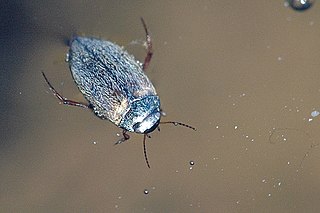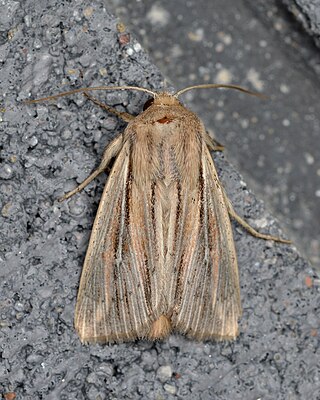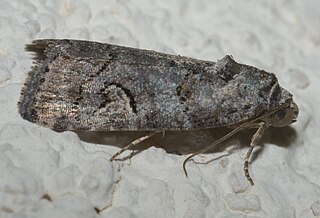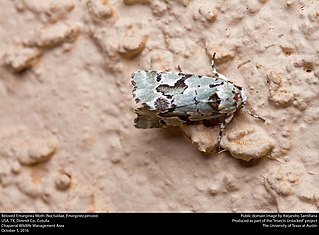Related Research Articles

The Noctuidae, commonly known as owlet moths, cutworms or armyworms, are a family of moths. They are considered the most controversial family in the superfamily Noctuoidea because many of the clades are constantly changing, along with the other families of the Noctuoidea. It was considered the largest family in Lepidoptera for a long time, but after regrouping Lymantriinae, Catocalinae and Calpinae within the family Erebidae, the latter holds this title now. Currently, Noctuidae is the second largest family in Noctuoidea, with about 1,089 genera and 11,772 species. This classification is still contingent, as more changes continue to appear between Noctuidae and Erebidae.

Stiriini is a tribe of owlet moths in the family Noctuidae. There are about 16 genera and more than 90 described species in Stiriini.
Noctuini is a tribe of owlet moths in the family Noctuidae. There are at least 520 described species in Noctuini.

Hydroporini is a tribe of predaceous diving beetles in the family Dytiscidae. There are at least 730 described species in Hydroporini.

Drepanulatrix hulstii is a species of geometrid moth in the family Geometridae. It was described by Harrison Gray Dyar Jr. in 1904 and is found in North America.
Caberini is a tribe of geometrid moths in the family Geometridae. There are at least 50 described species in Caberini.

Plataea personaria is a species of geometrid moth in the family Geometridae. It was described by Henry Edwards in 1881 and is found in North America.
Idaea retractaria is a species of geometrid moth in the family Geometridae. It was described by Francis Walker in 1861 and is found in North America.
Antiblemma filaria is a species of moth in the family Erebidae. It was described by Smith in 1900 and is found in North America.

Leucania commoides, the comma wainscot or two-lined wainscot moth, is a species of cutworm or dart moth in the family Noctuidae. It was described by Achille Guenée in 1852 and is found in North America.

Leucaniini is a tribe of cutworm or dart moth in the family Noctuidae. There are at least 40 described species in Leucaniini.
Heterocampa averna is a species of prominent moth in the family Notodontidae. It was described by William Barnes and James Halliday McDunnough in 1910 and is found in North America.

Heterocampinae is a subfamily of prominent moths in the family Notodontidae. There are at least 60 described species of Heterocampinae in North America.

Anomalini is a tribe of shining leaf chafers in the family Scarabaeidae. There are about 1300 described species in Anomalini worldwide, including 60 in North America.
Stenoporpia vernata is a species of moth in the family Geometridae. It was described by William Barnes and James Halliday McDunnough in 1910 and is found in North America.
Aleptina junctimacula is a moth in the family Noctuidae. It was described by André Blanchard in 1984 and is found in North America.

Triocnemidina is a subtribe of owlet moths in the family Noctuidae. There are about 16 genera and at least 30 described species in Triocnemidina.

Psaphidini is a tribe of owlet moths in the family Noctuidae. There are at least 40 genera and at least 90 described species in Psaphidini.

Meropleon ambifusca, or Newman's brocade, is a species of cutworm or dart moth in the family Noctuidae. It was described by Newman in 1948 and is found in North America.
Trichordestra beanii is a species of cutworm or dart moth in the family Noctuidae. It was described by Augustus Radcliffe Grote in 1877 and is found in North America.
References
- ↑ "Pseudeustrotiini Tribe Information". BugGuide.net. Retrieved 27 January 2018.
- ↑ "Pseudeustrotiini Report". Integrated Taxonomic Information System. Retrieved 27 January 2018.
- ↑ "North American Moth Photographers Group" . Retrieved 27 January 2018.
- Lafontaine, J. Donald & Schmidt, B. Christian (2010). "Annotated check list of the Noctuoidea (Insecta, Lepidoptera) of North America north of Mexico". ZooKeys, vol. 40, 1-239.